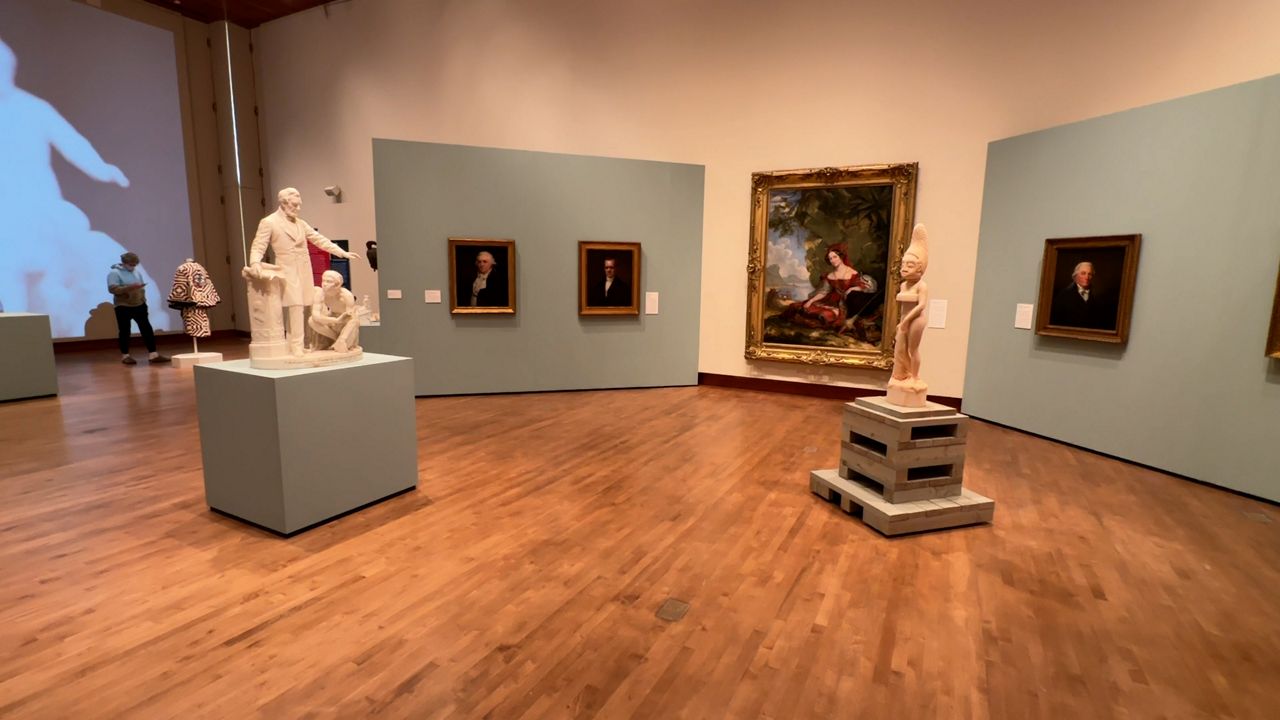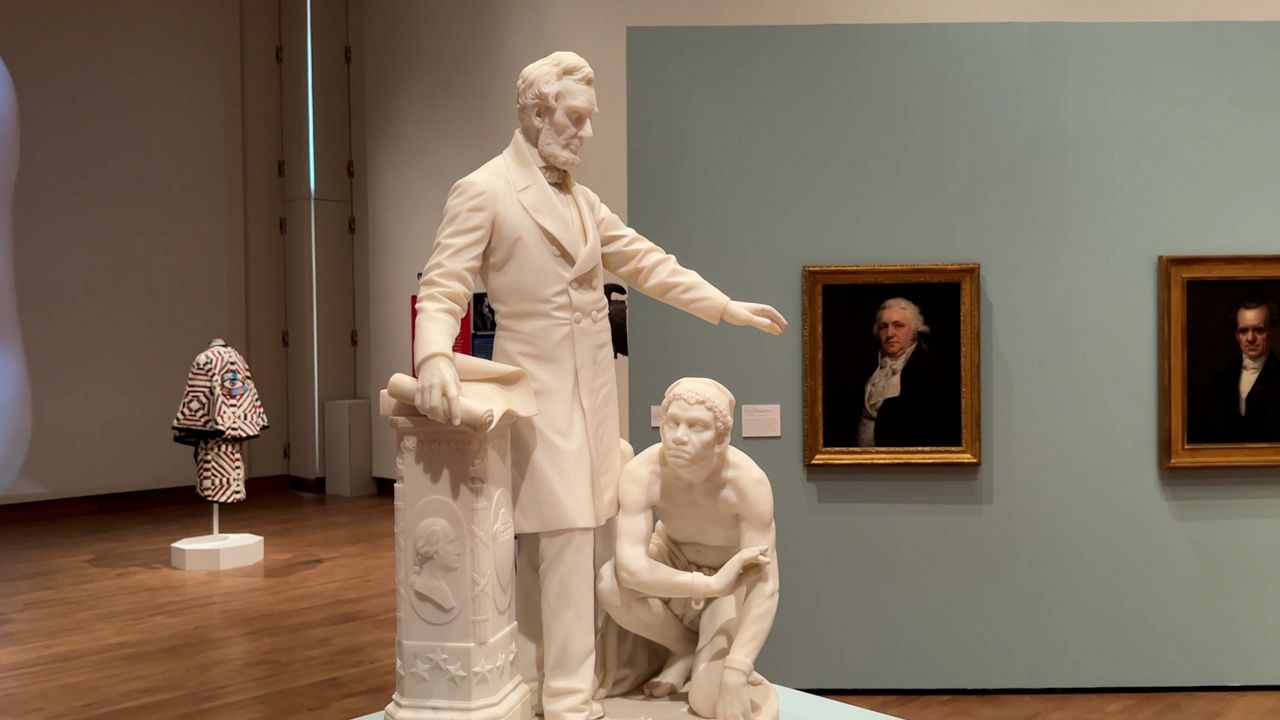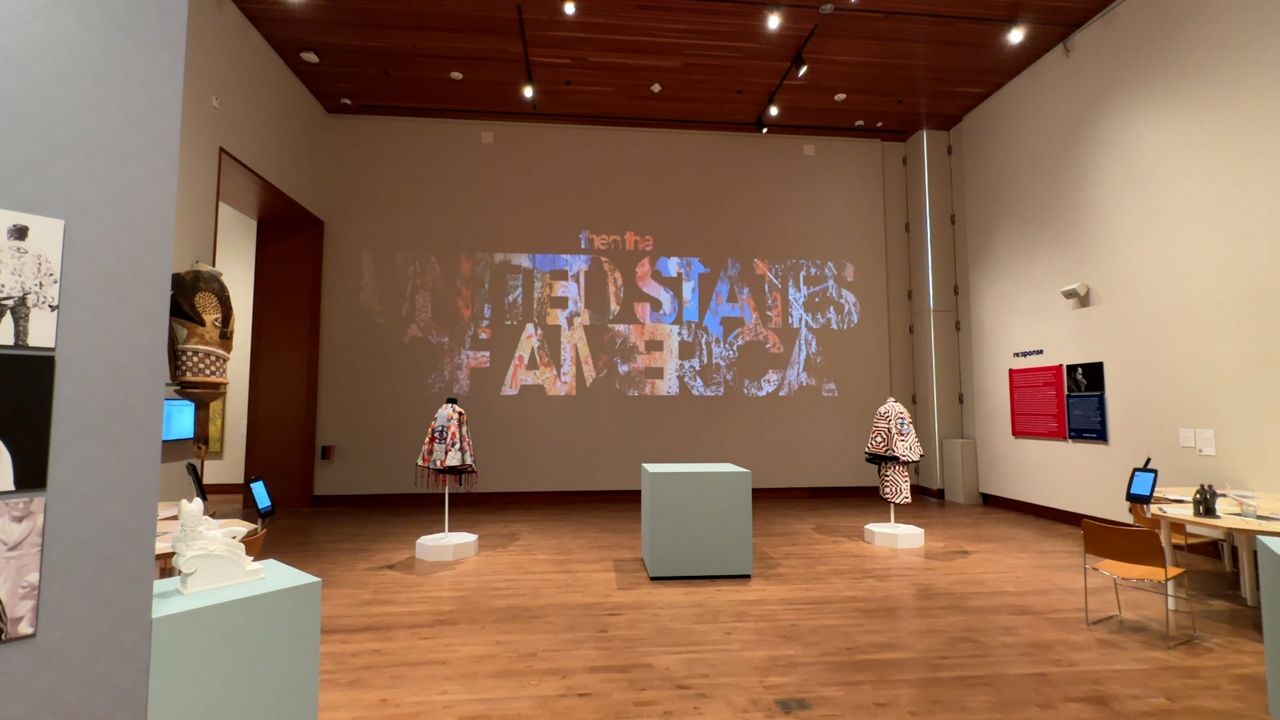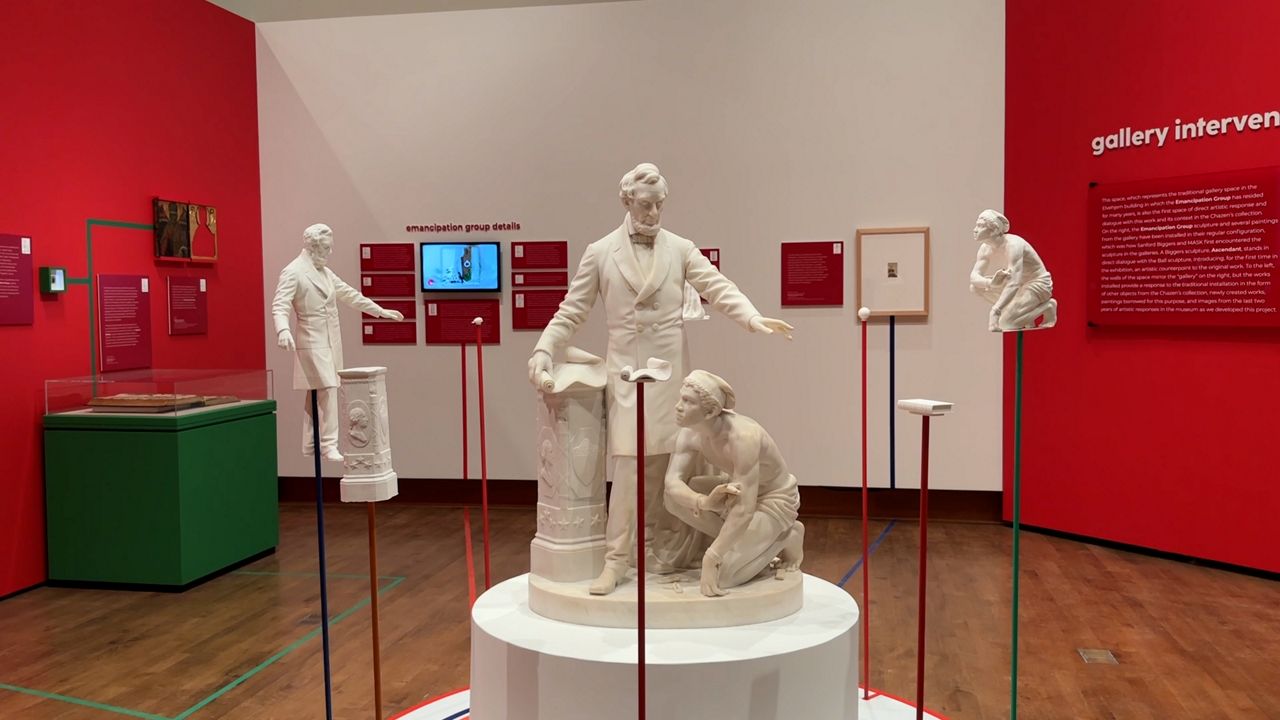MADISON, Wis. — A new exhibition at a Wisconsin museum is forging a new path for dealing with problematic works of art.
The Chazen Museum of Art on the University of Wisconsin campus has a new exhibit called re:mancipation.
There’s a lot of debate about what to do with historic art and monuments that reflect racism in America’s history. Sometimes pieces are taken down and shown in museums, sometimes they get plaques explaining their context, and sometimes there are “counter-works” that stand alongside them in response.

The Chazen Museum has a sculpture in its collection called Emancipation Group. It was sculpted in 1876 by artist Thomas Ball in response to Abraham Lincoln’s assassination. It depicts Lincoln standing over a kneeling Freedman, having broken his chains.
Other versions of the sculpture exist in a larger scale. One is part of Lincoln Park in Washington D.C., and another was in Boston.

Activists say the sculpture shows white-savior-ism, and disregards the part that Black enslaved people had in their own freedom. Former slave and abolitionist Frederick Douglass said at the time it did not “tell the whole truth of slavery.”
After a campaign to remove it, it was taken down in 2020. City officials there are still deciding what to do with it, and how to add context wherever it’s on display next. It’s currently in storage.
Staff at the Chazen Museum wanted to try something new with their version of the statue.
“I don't use the word unprecedented lightly, but it is pretty unprecedented,” said Museum Director Amy Gilman.

There’s now an entire exhibition built around Emancipation Group at the Chazen Museum. It includes historical context, art from Africa, and art in response to Emancipation Group. The museum partnered with artist Sanford Biggers and a group called the MASK Consortium to create the project.
“We wanted to grapple with [the statue’s problematic nature],” said Gilman. “What are you gonna do, you're gonna take it off view? You're gonna put up a label? You’re gonna maybe do a single program?”
Curators spent two years putting the project together. There’s even a podcast about it, and dance and music pieces played on a giant screen.
“It’s kind of a choose-your-own-adventure,” Gilman said. “If you are really interested in history, there's lots of historical text. If you are interested in the technology, you can explore the iconographic analysis, and you can look at the 3D scans that we did of the object. If you're interested in music and dance and textiles and sculpture, there's also things are responsive there.”

The exhibit also includes a deconstruction of the pieces within the sculpture, a visual representation of how many people were enslaved in America, and art focused on Black Wisconsinites who made history.
“We really just want you to be here and learn,” Gilman said. “Not only about the sculpture, but about our own history and about the complexity of that history, in a way that has been really hard to do in the past.”
The Chazen Museum of Art is free to visit, and the exhibition will be on display through June.
